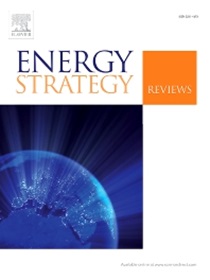评估深度学习方法对太阳能和光伏发电预测的影响:系统综述
IF 7.9
2区 工程技术
Q1 ENERGY & FUELS
引用次数: 0
摘要
准确的太阳能和光伏发电(PV)功率预测对于优化电网整合、管理储能和最大化太阳能发电系统的效率至关重要。深度学习(DL)模型由于能够在大型数据集中学习复杂的非线性关系,在这一领域显示出了前景。本研究对深度学习在太阳能光伏预测中的应用进行了系统的文献综述(SLR),解决了现有文献中的空白,这些文献通常侧重于传统的机器学习或更广泛的可再生能源应用。这篇综述特别旨在确定所采用的深度学习架构、所使用的预处理和特征工程技术、所利用的输入特征、所应用的评估指标以及该领域的持续挑战。通过对从Web of Science数据库中检索到的155篇文章的初始集合中的26篇文章进行严格分析,我们发现长短期记忆(LSTM)网络是最常用的算法(出现在32.69%的论文中),紧随其后的是卷积神经网络(cnn),占28.85%。此外,小波变换(WT)被发现是最突出的数据分解技术,而皮尔逊相关是最常用的特征选择。我们还发现,环境温度、压力和湿度是最常见的输入特征。我们的系统评估为最先进的基于dl的太阳预测提供了关键的见解,并确定了未来研究的关键领域。未来的研究应优先发展更具鲁棒性和可解释性的模型,并探索多源数据的整合,以进一步提高预测精度。这些进步对于将太阳能有效地整合到未来的电网中至关重要。本文章由计算机程序翻译,如有差异,请以英文原文为准。
Evaluating the impact of deep learning approaches on solar and photovoltaic power forecasting: A systematic review
Accurate solar and photovoltaic (PV) power forecasting is essential for optimizing grid integration, managing energy storage, and maximizing the efficiency of solar power systems. Deep learning (DL) models have shown promise in this area due to their ability to learn complex, non-linear relationships within large datasets. This study presents a systematic literature review (SLR) of deep learning applications for solar PV forecasting, addressing a gap in the existing literature, which often focuses on traditional ML or broader renewable energy applications. This review specifically aims to identify the DL architectures employed, preprocessing and feature engineering techniques used, the input features leveraged, evaluation metrics applied, and the persistent challenges in this field. Through a rigorous analysis of 26 selected papers from an initial set of 155 articles retrieved from the Web of Science database, we found that Long Short-Term Memory (LSTM) networks were the most frequently used algorithm (appearing in 32.69% of the papers), closely followed by Convolutional Neural Networks (CNNs) at 28.85%. Furthermore, Wavelet Transform (WT) was found to be the most prominent data decomposition technique, while Pearson Correlation was the most used for feature selection. We also found that ambient temperature, pressure, and humidity are the most common input features. Our systematic evaluation provides critical insights into state-of-the-art DL-based solar forecasting and identifies key areas for upcoming research. Future research should prioritize the development of more robust and interpretable models, as well as explore the integration of multi-source data to further enhance forecasting accuracy. Such advancements are crucial for the effective integration of solar energy into future power grids.
求助全文
通过发布文献求助,成功后即可免费获取论文全文。
去求助
来源期刊

Energy Strategy Reviews
Energy-Energy (miscellaneous)
CiteScore
12.80
自引率
4.90%
发文量
167
审稿时长
40 weeks
期刊介绍:
Energy Strategy Reviews is a gold open access journal that provides authoritative content on strategic decision-making and vision-sharing related to society''s energy needs.
Energy Strategy Reviews publishes:
• Analyses
• Methodologies
• Case Studies
• Reviews
And by invitation:
• Report Reviews
• Viewpoints
 求助内容:
求助内容: 应助结果提醒方式:
应助结果提醒方式:


